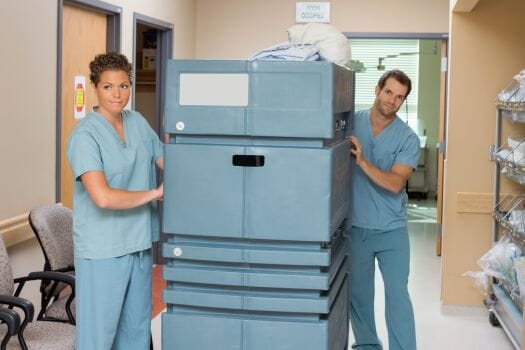Leading the Patient Experience Through a Pandemic
Imagine you get a call late at night that your relative has been in a car accident and is currently being transported to a hospital an hour from where you live. Imagine the fear and panic you might experience, not knowing if your loved one is okay. You jump into your car, drive to an unfamiliar area and building and are asked to take a seat by masked individuals who aren’t giving you any information. Alone, scared, frustrated and unsure you are then informed that you cannot see your loved one because due to the COVID-19 pandemic, the hospital is not allowing visitors. No, this is not a strange nightmare - it is a real-life scenario for so many patients and visitors during the pandemic.
As an education leader at Xanitos, I have collaborated with other leaders to adapt programs to accommodate safer learning for managers and hourly team members during the pandemic. From increased training on policies and procedures to online education and virtual workshops, our focus has been on our frontline teams and how we can better help to save lives. Our teams have risen to this challenge and provided a safe environment to work and heal within.
During the pandemic, healthcare leaders and care teams have diligently focused on safely providing care, ensuring we all adhere to continuously updated guidance on PPE, general safety precautions, and employee wellbeing. Yet, when talking about patient experience during a time of such uncertainty, it is not uncommon to hear leaders mention, “Patient experience is not the focus right now.” However, it is imperative that we do both.
Ask yourself what the patient experience at your hospital looks like right now. How do you deliver compassionate care in a world where we must social distance, avoid unnecessary visitors and hide the part of our faces that communicate so much? It is important that we, as members of the care team, look at this and plan accordingly. Patient experience does not look the same that it always has and with reduced visitation, our patients are arguably starving for human connectivity as much as they ever have. There is no one size fits all solution; each individual must look at the way they communicate and adjust accordingly. The first step is to consider the view of the patient and accept that adjustments must be made.
Next, let’s consider what it is that patients need to experience from us as providers. A consumer study (The Beryl Institute, 2018 ) found that patients value three aspects above all others:
- Listen to me
- Communicate clearly in a way I understand
- Treat me with courtesy and respect
Notice all three can be combined into one theme: communication. There are various types of communication, both physical and auditory that influence how individuals perceive our message. This has been a topic of study for many industries, and healthcare is no acceptation to this. We must ask ourselves, what does communication with our patients currently look like? Are we meeting these needs? Prior to COVID-19, we showed active listening, empathy and understanding through our facial expression, body language and touch as much as our words. While mask wearing is a vital part of our world today it also limits some of our communication and as such, we must find alternative ways to send the same message.
As our patients and visitors are feeling more isolated than ever due to social distancing, there are several things you can to do to help communicate that you care while adhering to COVID-19 restrictions and regulations:
- Compensate for less facial expression: your patient cannot see you smile. Yes, some of this action does reach your eyes but there are many different actions you can take in addition to help reassure your patients. Stop what you are doing when greeting, use eye contact, increase positive body language and gestures and pay special attention to your tone of voice. A soft, comforting tone can convey the comfort that a smile once did. Tilting your head or nodding during conversations can also show active listening. Beware of movements like touching your chest or scratching as these can convey worry or stress. Your patient is watching you just as closely.
- Remember, you cannot see their face either. As healthcare providers we become adept at interpreting emotions and understanding through facial cues, which is something we can no longer rely on. Verbally confirming understanding and using methods like teach-back have become even more imperative, and again taking the time to verbally ascertain where your patient’s feelings are can be very powerful.
- Explain the “why” behind safety regulations. Remember that mandatory PPE, social distancing and visiting restrictions can be scary to your patients and visitors, during a time when they are already feeling many negative emotions. This can be done verbally as well as through signage to call attention to all the safety protocols enacted. Through repetition of reasoning, our visitors begin to realize these are in place to protect them and their loved ones instead of seeing them as a barrier. Many patients and visitors are also worried about pathogens in a public area so think carefully about availability of hand sanitizer, and speak to the hospital cleaning and disinfection processes. This is part of ensuring our patients that they are safe and we care.
As environmental services specialists and leaders in healthcare, I’m proud to be a part of and witness Xanitos’ teams rising to these challenges amidst new and varied challenges in a constantly evolving crisis. Xanitos has developed our “Feel Safe” program to improve visual and written communication with patients and staff. We have continually sought to keep our patients, visitors and healthcare workers safe and adapting to the new “normal” that 2020 has brought us. By focusing on the patient experience in times of distress and adjusting the way we communicate accordingly, we continue to support our patients’ trust in us to keep them safe during a time when we could all use more of that “safe” feeling.
 |
About the Author: Sara Witt is Xanitos' regional training manager for the east. She was recently accredited as a Certified Patient Experience Professional (CPXP). The certification awarded by the Patient Experience Institute (PXI), signifies that recipients possess the qualities of a leader who influences the systems, processes, and behaviors that cultivate consistently positive experiences with knowledge and practical experience necessary to pass a rigorous examination. In addition, achievement of certification highlights a commitment to the profession and to maintaining current skills and knowledge in supporting and expanding the field of patient experience. Once certified, a CPXP must maintain his or her certification every three years and remain active in the field.






